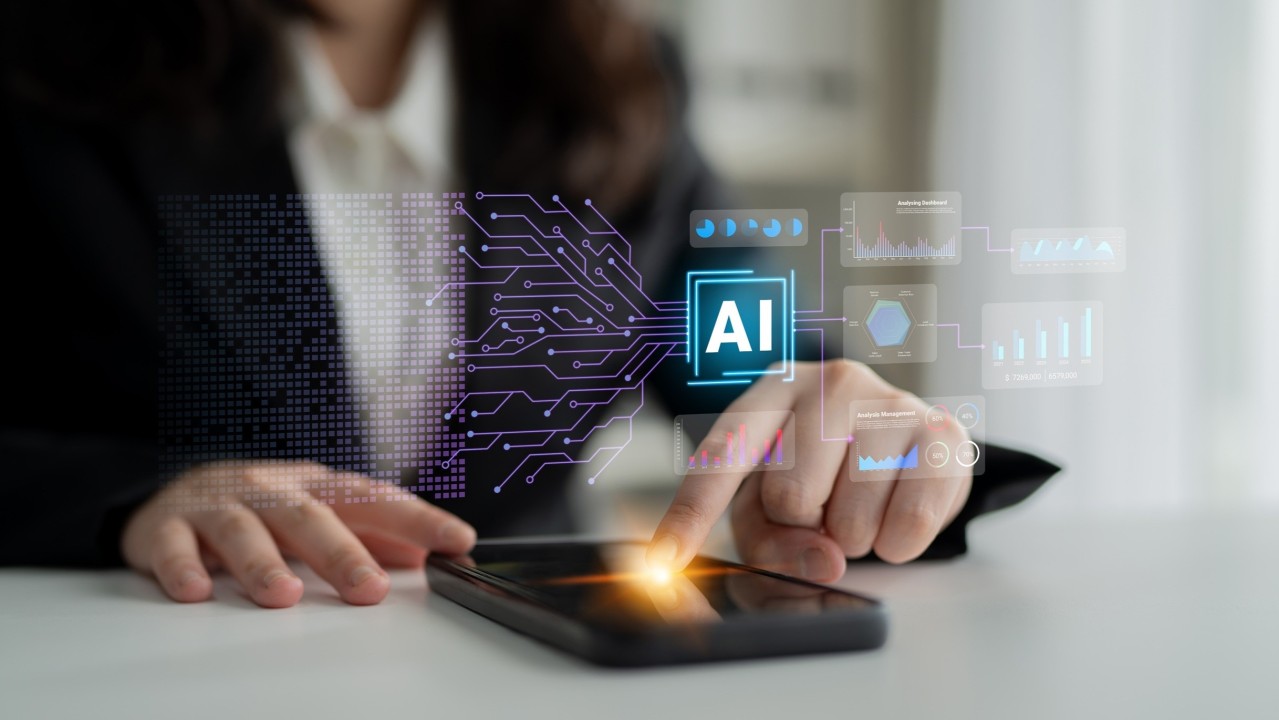Delivery Hero and AWS: Cost Optimization in the Cloud
17 August 2023
Delivery Hero is one of the largest local delivery businesses in the world, serving up to 2.2 billion people in over 70 countries. Its network covers 1.5 million restaurants and 1.4 million delivery drivers and riders. It is the name behind well-known brands, including foodpanda, Glovo, foodora and Talabat – many acquired over the past decade as it chases growth.

It is also pioneering the concept of “quick commerce” as it establishes the capability to deliver groceries and household goods to homes in less than an hour – and in many cases, within 10 to 20 minutes.
Now switching its focus to profitability, the business has leaned on cloud computing as it tries to reduce the costs involved with running such substantial global operations. Just as it did during its hyper-growth phase when the priority was scalability, it has chosen AWS as its cloud service provider, primarily for its global reach and the wide range of services it provides.
This week I had the chance to talk to Michael Krenz, an Engineering Director at Delivery Hero who works on managing cloud cost. We took the opportunity to discuss ways in which global enterprises can leverage cloud platforms in their quest for profitability while maintaining a focus on innovation and customer experience.
What is Cost Optimization, and How is Cloud an Enabler?
Growing a business to a global-scale is expensive, as revenue is ploughed back into operations in order to continually move into new markets and attract new customers. There comes a time, however, when most companies have to show they can be profitable. Often, this coincides with periods of economic uncertainty, as shareholders look for reassurance that they are making wise investments.
Cost optimization is one way that companies look to achieve profitability. It involves minimizing operating costs while attempting to maintain customer experience.
It's often cited as a driving force behind a company's decision to migrate operations to the cloud. This is because the cloud enables companies to create efficiencies in their IT infrastructure spending by moving to “pay-as-you-go” and subscription models, rather than having to buy and maintain expensive on-premises servers and data centers, along with the skilled and expensive staff needed to operate them.
For Delivery Hero, the situation was a little different as it has been cloud-native since its founding in 2011.
Krenz told me, "We really rely on the wide range of services in the AWS ecosystem, and they have been instrumental in helping the company scale up and support the hyper-growth we’ve seen.
"Both of our companies have a culture of innovation, so there's a really good fit, and we have a very dedicated team of specialists at AWS who support us in finding cost optimization opportunities."
How Did Delivery Hero Achieve Cost Optimization?
AWS cloud services enabled Delivery Hero to undertake several initiatives aimed at reducing costs while maintaining service levels. One of these was increasing the use of “spot instances” – an AWS feature that allows its customers to utilize spare cloud computing capacity (Amazon Elastic Cloud Compute) at significantly reduced costs. Krenz told me that some of their teams managed to move up to 90 percent of their workloads onto these spot instances, leading to substantial savings with no impact on service delivery or customer experience. It also adopted NoSQL databases in place of the more costly and expensive SQL databases it had previously used for several of its operations, creating further savings.
An ongoing initiative is a collaboration with AWS in order to create Delivery Hero’s own customer data platform (CDP). This involves leveraging machine learning analytics across petabyte-scale customer datasets to get a better understanding of customer behavior and experience.
Another system has been developed in order to administer support and security checking across the company’s fleet of delivery drivers and riders. This allows it to use machine learning algorithms to check faces against ID card data to reduce fraud. Thanks to the quick turnaround enabled by AWS architecture, this service was put in place within six weeks and has led to a decrease of 70 percent in fraudulent activities.
And fraud detection was also key to another use case, this time for the AWS Neptune graph database service. Here, the aim was to reduce the money lost to customers dishonestly taking advantage of a first-time discount for new customers by registering multiple accounts. By implementing the system through Neptune, it was able to engineer a system that increased the amount of blocked fraudulent purchases by 32%. Importantly it did this without exposing personal data by algorithmically determining where multiple accounts were linked to one customer, without needing to know who that customer was.
The changes have not all been purely technical, though.
Krenz says, "The other big challenge I see is that you need to change the culture.”
In order to do this, it was necessary to encourage engineering teams that had previously been focused on performance and growth to see reducing costs as a key business goal.
He told me, "So we invested a lot of effort to put those costs right at their fingertips … right where they are … not only through dashboards but through live notifications when we see a cost anomaly … to really incentivize the teams to work on this.”
Overall, Krenz says that operational savings of around 10 percent can be attributed to Delivery Hero’s cost optimization initiatives hosted on the AWS cloud.
He said, "When you spend millions of dollars per month … even a one percent saving can really make a major difference.”
The Next Steps in Delivery Hero’s Cloud Journey
With a mission to become the number one provider of local delivery services in every market where it operates, Delivery Hero plans to continue innovating in the cloud. As well as reducing costs, it is looking to emerging technologies like AI to create new customer experiences that will allow it to stand out from its competitors.
While it already uses AI for predicting customer behavior and optimizing delivery routes, it is also looking towards the newer generation of generative AI applications.
Here, one potential use they are exploring is automating the creation of menus and product descriptions across the million-plus restaurants it delivers from. When managed manually, this is a labor-intensive task that involves creating a large number of pictures and text content. Generative AI has the potential to hugely speed up this process, driving further efficiencies.
Krenz told me, "We will continue to build more global services that our local platforms can use so that they don’t have to reinvent the wheel.
"And we will, of course, keep using all the new services that Amazon is releasing into their ecosystem.”
If you want to learn more about the use cases from Delivery Hero with AWS, check out this site: https://aws.amazon.com/solutions/case-studies/innovators/delivery-hero/
You can click here to watch my podcast conversation with Michael Krenz, Engineering Director for Delivery Hero, where we deep-dive into more aspects of cost optimization in the cloud.
Related Articles
8 AI Ethics Trends That Will Redefine Trust And Accountability In 2026
By now, “smart” versions exist of just about every home appliance, gadget and gizmos we can think of. However, manufacturers continue[...]
The 7 Banking And Fintech Trends That Will Define 2026
By now, “smart” versions exist of just about every home appliance, gadget and gizmos we can think of. However, manufacturers continue[...]
The 8 Biggest Healthcare Technology Trends To Watch In 2026
By now, “smart” versions exist of just about every home appliance, gadget and gizmos we can think of. However, manufacturers continue[...]
Why The AI Supercycle Will Fail Without Advanced Networks
By now, “smart” versions exist of just about every home appliance, gadget and gizmos we can think of. However, manufacturers continue[...]
The Two-Tier AI Economy: Why Half Of Companies Are Being Left Behind And How To Close The Gap
By now, “smart” versions exist of just about every home appliance, gadget and gizmos we can think of. However, manufacturers continue[...]
5 AI-Era Skills Mistakes That Will Cost Your Business Millions In 2026
By now, “smart” versions exist of just about every home appliance, gadget and gizmos we can think of. However, manufacturers continue[...]
Sign up to Stay in Touch!
Bernard Marr is a world-renowned futurist, influencer and thought leader in the fields of business and technology, with a passion for using technology for the good of humanity.
He is a best-selling author of over 20 books, writes a regular column for Forbes and advises and coaches many of the world’s best-known organisations.
He has a combined following of 4 million people across his social media channels and newsletters and was ranked by LinkedIn as one of the top 5 business influencers in the world.
Bernard’s latest book is ‘Generative AI in Practice’.










Social Media